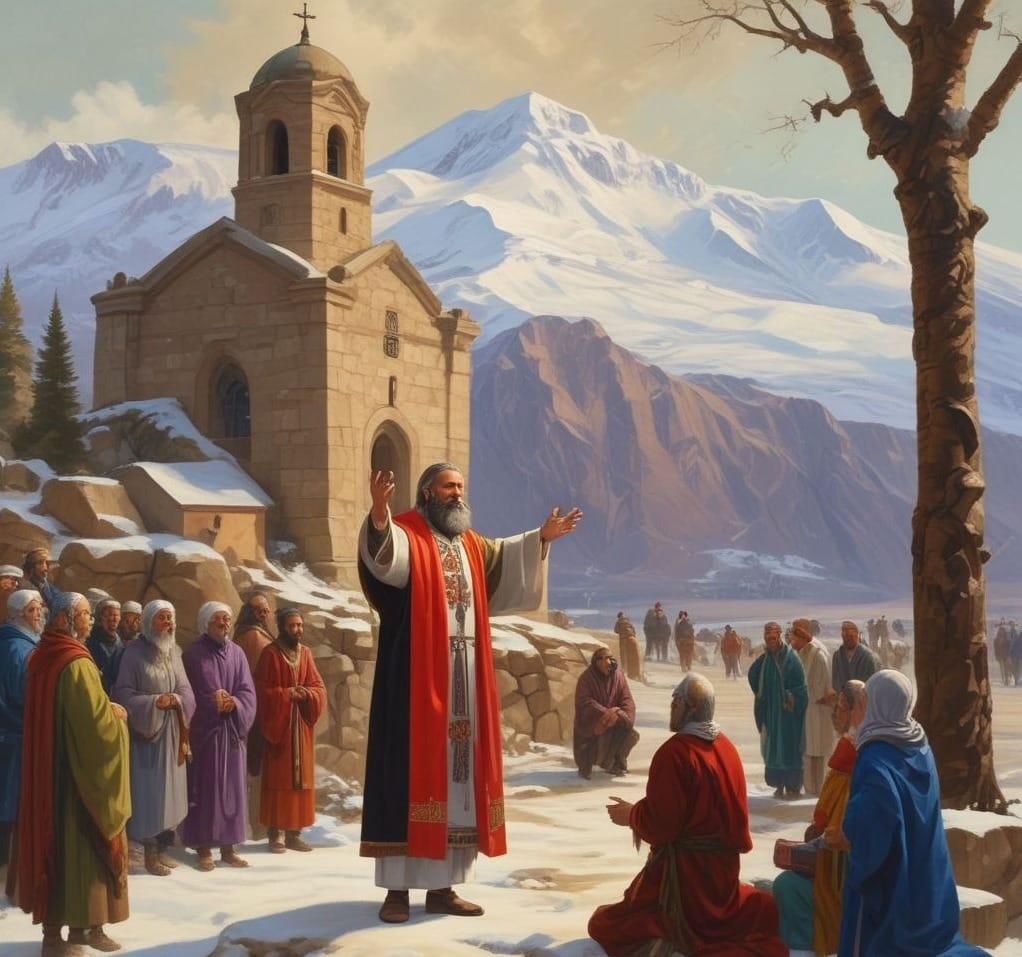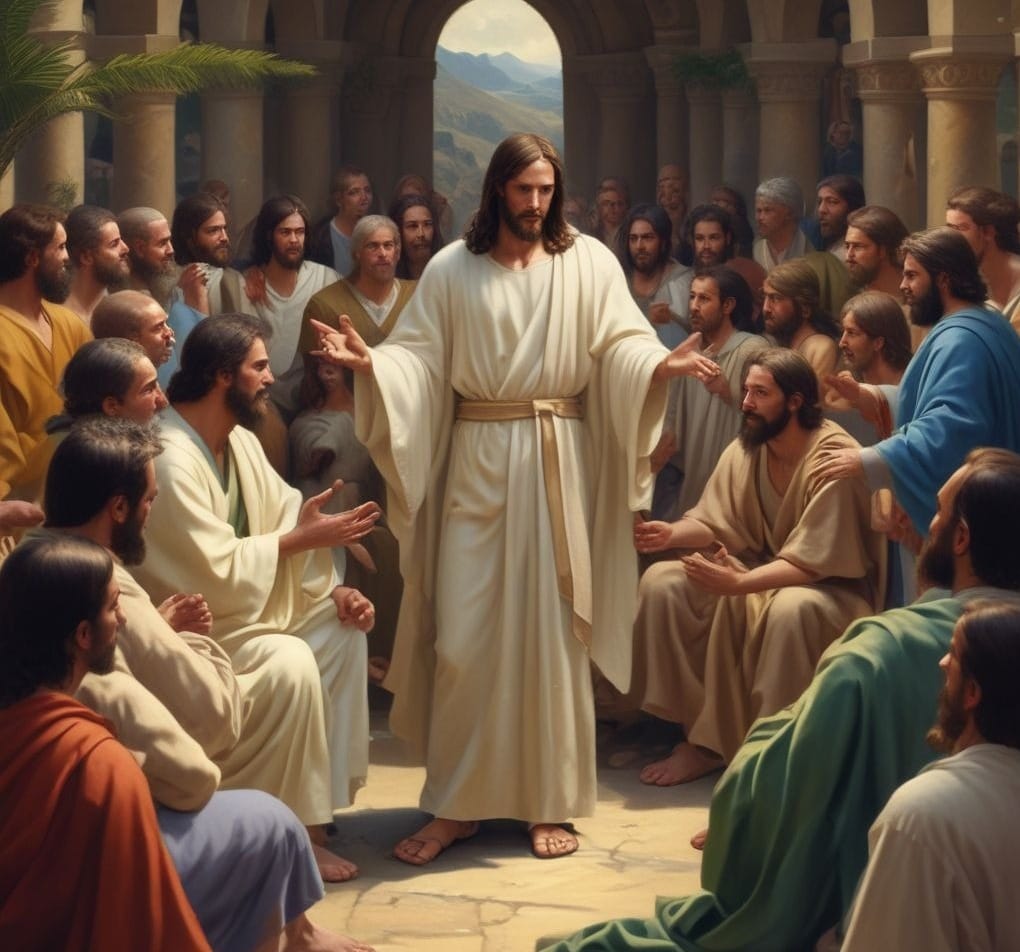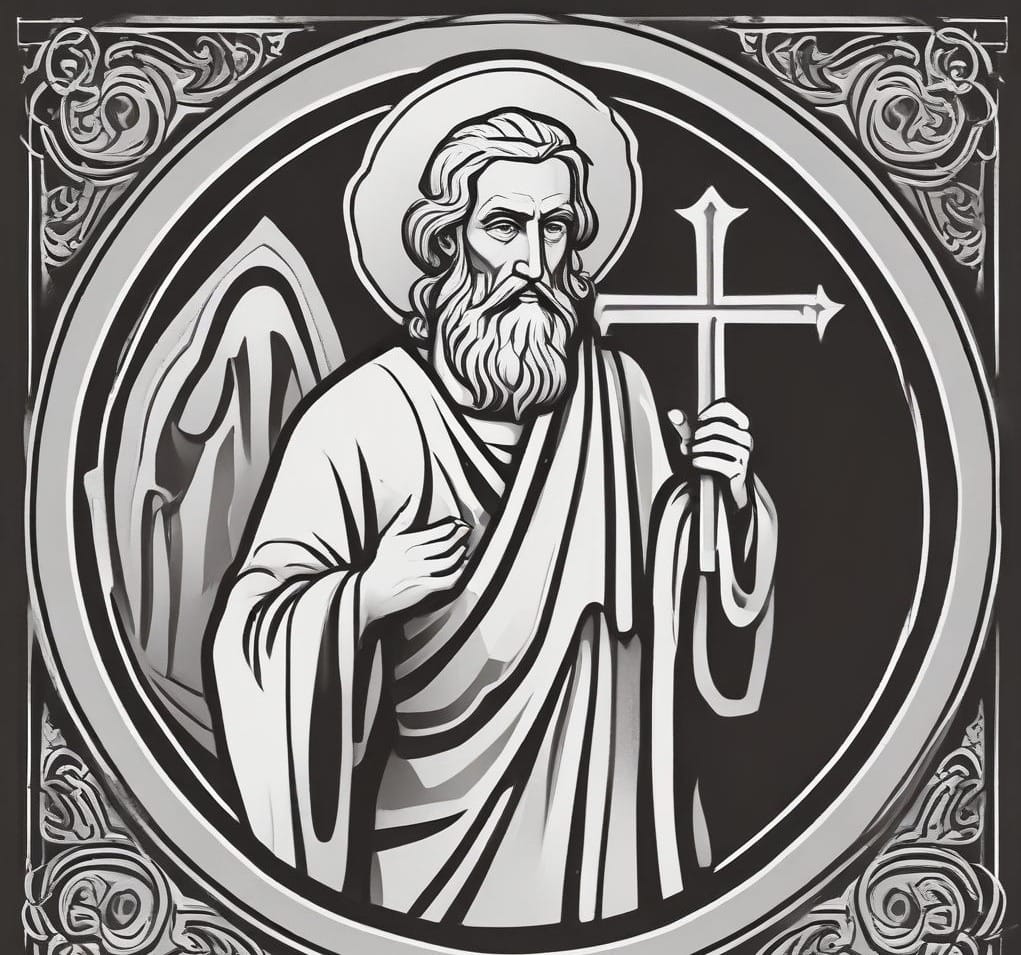The Life and Legacy of Bartholomew the Apostle

Table of Contents
Introduction
Early Life and Background
Skepticism and Conversion
Time with Jesus
Missionary Journeys
India
Armenia
Other Regions
Martyrdom
Role in Spreading the Gospel
Lesser-Known Facts
Legacy and Influence
Conclusion
Introduction
Bartholomew the Apostle, often identified with Nathanael in the Gospel of John, stands as a compelling figure in early Christianity. One of the twelve disciples chosen by Jesus Christ, his life story weaves together threads of skepticism, profound faith, tireless missionary zeal, and ultimate martyrdom. While he may not enjoy the prominence of Peter, Paul, or John in biblical narratives, Bartholomew’s journey from doubt to devotion offers a unique lens into the transformative power of encountering Jesus. This comprehensive biography delves into his early life, his pivotal conversion, his extensive missionary travels, his brutal martyrdom, and the lesser-known facets of his character that enrich his legacy.
Bartholomew’s story begins in the humble region of Galilee, where he emerges as a man of integrity and intellectual curiosity. His initial skepticism about Jesus of Nazareth gives way to a deep conviction, propelling him into a life of service that would take him across continents—from India to Armenia and beyond. His martyrdom, a testament to his unwavering faith, cements his place among the foundational figures of the Christian faith. Alongside these well-known aspects, this biography uncovers obscure details about his life, drawing from historical accounts, biblical texts, and church traditions to paint a fuller picture of this remarkable apostle.
✨ For more explorations into the Scriptures and insights on God’s divine plan, visit our Bible blog filled with faith-inspired articles.
Early Life and Background
Bartholomew, likely named Nathanael Bar-Tolmai, meaning “son of Tolmai,” was born in Cana of Galilee, a small village in the region that also produced other disciples of Jesus. The name Nathanael, translating to “God has given,” hints at a divine purpose woven into his identity from the outset. While the New Testament offers scant details about his early years, scholars infer that he was part of a close-knit community of fishermen and laborers, a common occupation in Galilee due to its proximity to the Sea of Galilee. His connection to Philip, another apostle from nearby Bethsaida, suggests a pre-existing friendship that would later play a crucial role in his encounter with Jesus.
Cana, though modest, gained fame as the site of Jesus’ first miracle—turning water into wine at a wedding (John 2:1–11). Whether Bartholomew witnessed this event remains uncertain, but his roots in Cana placed him within the orbit of Jesus’ early ministry. As a Galilean, he likely grew up under Roman occupation, navigating a world of political tension and religious expectation. His knowledge of the Old Testament, particularly the Law of Moses and the prophets, set him apart from many of his peers. Unlike the Pharisees, who studied Scripture professionally, Bartholomew pursued this passion as a personal endeavor, reflecting a sincere quest for truth that would later align with his recognition of the Messiah.
Bartholomew’s early life, though sparsely documented, reveals a man shaped by his environment and relationships. His familiarity with Philip and possibly other future Apostles like Peter, Andrew, James, and John suggests a shared context of labor and faith. This foundation prepared him for the dramatic turning point that would define his life: his meeting with Jesus.
Skepticism and Conversion
Bartholomew’s introduction to Jesus, recorded in John 1:45–51, is one of the most revealing episodes of his life. It begins with Philip, his friend, rushing to share news of a discovery: “We have found the one Moses wrote about in the Law, and about whom the prophets also wrote—Jesus of Nazareth, the son of Joseph” (John 1:45). Bartholomew’s response is immediate and telling: “Nazareth! Can anything good come from there?” (John 1:46). This quip reflects a regional prejudice common among Galileans, who viewed Nazareth—a small, unremarkable village—as inferior to other towns like Cana or Bethsaida.
His skepticism was not mere cynicism but a product of his discerning nature. As a student of Scripture, Bartholomew likely expected the Messiah to emerge from a more prominent place, such as Jerusalem, or with a more illustrious pedigree. Nazareth, with its lack of biblical significance, clashed with his preconceptions. Yet, Philip’s persistence—“Come and see”—overcame his reluctance, setting the stage for a life-altering encounter.
When Bartholomew approached Jesus, the Lord greeted him with striking insight: “Here truly is an Israelite in whom there is no deceit” (John 1:47). This compliment affirmed Bartholomew’s authenticity and integrity, qualities that distinguished him even before his discipleship began. Jesus then deepened the exchange, declaring, “Before Philip called you, when you were under the fig tree, I saw you” (John 1:48). In Jewish culture, sitting under a fig tree symbolized a place of study, prayer, or contemplation—often of the Scriptures. This reference suggests Bartholomew was engaged in such reflection when Philip found him, a detail that underscores his spiritual preparedness.
Jesus’ supernatural knowledge stunned Bartholomew, prompting an immediate confession: “Rabbi, you are the Son of God; you are the king of Israel” (John 1:49). In this moment, his skepticism dissolved, replaced by a bold declaration of faith. Jesus responded with a promise: “You will see greater things than that… You will see heaven open, and the angels of God ascending and descending on the Son of Man” (John 1:50–51). This exchange marked Bartholomew’s conversion, transforming him from a doubter into a disciple ready to follow the Messiah.
This episode reveals Bartholomew’s complexity: a man of honest doubt, intellectual rigor, and openness to truth. His journey from skepticism to belief mirrors the struggles of many who grapple with faith, making his story relatable across centuries.
Time with Jesus

As one of the twelve Apostles, Bartholomew spent approximately three years in Jesus’ company, witnessing the core events of His ministry. Though the Gospels rarely highlight him individually, his presence among the disciples places him at the heart of Jesus’ miracles, teachings, and pivotal moments. He likely marveled at the feeding of the five thousand (John 6:1–14), listened to the Sermon on the Mount (Matthew 5–7), and observed the healing of the sick and demon-possessed.
Bartholomew’s time with Jesus included the post-resurrection appearances that solidified the disciples’ faith. In John 21:1–14, he is listed among the seven disciples who encountered the risen Christ at the Sea of Galilee, participating in the miraculous catch of fish and sharing a breakfast prepared by Jesus. This intimate moment reinforced his commitment as he transitioned from follower to missionary. He also received the Great Commission alongside the others: “Go and make disciples of all nations” (Matthew 28:19–20), a charge that would define his later life.
Yet, like his fellow disciples, Bartholomew was not immune to human weakness. During Jesus’ arrest and crucifixion, he fled in fear, abandoning the Lord in His darkest hour (Mark 14:50). This lapse, though a low point, reflects the raw humanity of the Apostles, who grew into their roles through trial and grace. After the resurrection and the descent of the Holy Spirit at Pentecost (Acts 2), Bartholomew emerged renewed, ready to fulfill his calling.
His time with Jesus equipped him with firsthand experience of the Gospel message—Christ’s life, death, and resurrection—which he would carry to distant lands. These years were a crucible, forging a disciple who would endure hardship and sacrifice for the sake of the truth he had come to embrace.
✨ For more explorations into the Scriptures and insights on God’s divine plan, visit our Bible blog filled with faith-inspired articles.
Missionary Journeys
After Jesus’ ascension, Bartholomew embraced the Great Commission with fervor, embarking on missionary journeys that spanned continents. Historical records and church traditions, though sometimes conflicting, provide a glimpse into his extensive travels and their impact on early Christianity.
India
One of the most intriguing accounts places Bartholomew in India, a mission documented by Eusebius of Caesarea in his Ecclesiastical History (5:10). Eusebius notes that Bartholomew preached in “India”—likely the northwestern region or the Konkan coast—and left behind a copy of the Gospel of Matthew. This text, written with a Jewish audience in mind, suggests he targeted Jewish diaspora communities or those familiar with Old Testament prophecies. Saint Jerome corroborates this, mentioning Bartholomew’s work in the Bombay area or Kalyan, where he shared the message of Christ’s salvation.
His presence in India, though sparsely detailed, marks him as one of the earliest Christian missionaries to reach the subcontinent. The Gospel of Matthew he carried became a tool for teaching, bridging cultural and religious divides as he introduced the story of Jesus to new audiences.
Armenia
Bartholomew’s most enduring legacy lies in Armenia, where he is credited, alongside Jude “Thaddeus,” with laying the foundations of Christianity. Tradition holds that he arrived in Armenia around the mid-first century, preaching to a pagan population steeped in Zoroastrianism and local cults. His efforts bore significant fruit: Armenia became the first nation to adopt Christianity as its state religion in 301 AD, a milestone often traced back to Bartholomew’s influence.
One notable story recounts his conversion of King Polymius (or a similar figure), an act that sparked both revival and resistance. This success, however, drew the ire of the king’s brother or local priests, setting the stage for Bartholomew’s martyrdom. The Armenian Apostolic Church reveres him as a founder, and his legacy endures in the nation’s Christian identity.
Other Regions
Bartholomew’s missionary zeal extended beyond India and Armenia. Traditions place him in Mesopotamia, Parthia, Lycaonia, and Ethiopia, regions that reflect the breadth of his evangelistic reach. Some accounts suggest he preached in Persia, engaging with Zoroastrian and Jewish communities, while others point to modern-day Azerbaijan, near Baku, around 71 AD. These diverse locales highlight his adaptability and courage, as he navigated linguistic, cultural, and religious barriers to share the Gospel.
His journeys were not without peril. Traveling through ancient trade routes, he faced hostile rulers, harsh climates, and the constant threat of persecution. Yet, his commitment to Christ’s command drove him forward, planting seeds of faith that would grow long after his death.
Martyrdom
Bartholomew’s missionary work culminated in a martyr’s death, a fate he shared with many of the Apostles. The most widely accepted tradition locates his martyrdom in Albanopolis, Armenia (modern-day southeastern Turkey), around 69 or 71 AD. The details, however, vary across sources, reflecting the challenges of piecing together first-century history.
The predominant account describes a gruesome execution: Bartholomew was flayed alive—his skin removed with knives—before being beheaded. This punishment, reportedly ordered by the brother of King Polymius or local authorities, stemmed from his success in converting the king and others to Christianity. The image of Bartholomew holding his flayed skin became a powerful symbol in Christian art, notably in Michelangelo’s The Last Judgment.
Alternative traditions offer different endings. Some Albanian sources claim he was crucified upside down, a method echoing Peter’s fate, while others suggest he was beaten unconscious, placed in a sack, and drowned in the sea. Despite these discrepancies, all accounts agree on the cause: his refusal to renounce his faith in Jesus Christ.
The site of his death in Vaspurakan, Armenia, is marked by the ruins of the Saint Bartholomew Monastery, built centuries later in his honor. His feast days—August 24 in the Roman Catholic Church, June 11 and August 25 in the Eastern Orthodox Church, and September 11 in the Coptic Church—commemorate his sacrifice and enduring witness.
Bartholomew’s martyrdom underscores the cost of discipleship in the early church. His willingness to die for the Gospel reflects the depth of his transformation from a skeptic to a stalwart Apostle.
Role in Spreading the Gospel
Bartholomew’s contributions to Christianity, though less documented than those of Paul or Peter, were vital to its early expansion. He did not author any canonical texts, but his role as a bearer of the Gospel—literally and figuratively—left a lasting mark. In India, his delivery of Matthew’s Gospel provided a written foundation for new believers. In Armenia, his preaching sparked a movement that shaped a nation’s spiritual destiny.
His missionary work embodied the Great Commission, extending the message of Christ’s love and resurrection to Gentiles and Jews alike. Apocryphal texts, such as the Gospel of Bartholomew, are linked to his name, though their authenticity is disputed. More significant is his lived witness: a life spent crossing borders, facing opposition, and building communities of faith.
Bartholomew’s presence at Jesus’ resurrection and ascension fueled his resolve. These experiences, coupled with the empowerment of the Holy Spirit at Pentecost, equipped him to proclaim a message that transcended cultural and geographic boundaries. His efforts helped establish Christianity as a global faith, fulfilling the vision Jesus entrusted to His disciples.
Lesser-Known Facts
Bartholomew’s life is rich with details often overlooked in standard accounts. These lesser-known facts illuminate his character and context:
Name and Origin: His full name, Nathanael Bar-Tolmai, combines “God has given” and “son of Tolmai,” tying him to Cana, Galilee, near Nazareth and Bethsaida.
Fisherman Ties: Likely a fisherman, he shared occupational and social bonds with Philip, Peter, Andrew, James, and John.
Scriptural Passion: His study of the Old Testament as a personal pursuit, not a profession, prepared him to recognize Jesus as the Messiah.
Nazareth Bias: His skepticism about Nazareth reflected civic pride, overcome by his encounter with Jesus.
Fig Tree Moment: Jesus’ praise—“an Israelite in whom there is no deceit”—may have coincided with Bartholomew’s Torah study under a fig tree.
Post-Resurrection Witness: He saw the risen Christ, joined the miraculous catch of fish, and received the Great Commission.
Armenian Founder: With Jude, he is celebrated as a founder of the Armenian Church, a legacy that endures today.
These insights reveal a man of depth, whose quiet faithfulness amplified his impact.
Legacy and Influence

Bartholomew’s legacy extends beyond his lifetime, influencing Christian theology, art, and culture. In Armenia, he is a national saint, his name synonymous with the church’s origins. Relics attributed to him rest in Rome’s Basilica of San Bartolomew all’Isola, a site of pilgrimage. Artists like Michelangelo immortalized his martyrdom, while churches worldwide honor his feast days.
His story resonates with believers facing doubt or persecution, offering a model of transformation and resilience. Bartholomew the Apostle, once a skeptic from Cana, became a cornerstone of the early church, his life a testament to the power of faith in action.
Conclusion
Bartholomew the Apostle’s journey—from a skeptical Galilean to a martyred missionary—encapsulates the essence of discipleship. His initial doubt about Jesus gave way to a confession of faith that propelled him across continents, sharing the Gospel with unwavering dedication. His missionary travels to India, Armenia, and beyond planted seeds of Christianity that flourished long after his brutal death. Lesser-known facets, from his scriptural study to his ties with fellow disciples, enrich our understanding of this humble yet heroic figure. Bartholomew’s life challenges us to confront our doubts, embrace truth, and live boldly for what we believe, even in the face of sacrifice.
✨ For more explorations into the Scriptures and insights on God’s divine plan, visit our Bible blog filled with faith-inspired articles.
